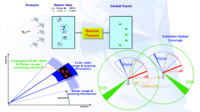
Photo from wikipedia
Due to the 3-D nature of hyperspectral images, as well as the spatial properties (such as regularity and continuity) of land covers, many 3-D feature extraction operators have been designed… Click to show full abstract
Due to the 3-D nature of hyperspectral images, as well as the spatial properties (such as regularity and continuity) of land covers, many 3-D feature extraction operators have been designed to fully exploit the joint spatial–spectral information. However, the large amount of obtained features can suffer from the “curse of dimensionality” problem, especially for the small training sample set. Moreover, various spatial–spectral features can represent the characteristics of the hyperspectral image from different aspects. In this paper, a multiple 3-D feature fusion framework (M3DF3) has been proposed for hyperspectral image classification. First, we extend the 2-D Gabor surface feature into 3-D (3DSF) domains to comply with the spatial–spectral structure of the hyperspectral image, which is directly applied on the original hyperspectral image instead of the Gabor features. Second, three 3-D feature extraction methods, including the 3-D morphological profile, the 3-D local binary pattern, and the proposed 3DSF, that, respectively, characterize the hyperspectral image from three different angles, i.e., morphology, local dependence, and shape smoothness, are fused under a multitask sparse representation framework to take full advantage of the multiple 3-D features together. The proposed M3DF3 approach was fully tested on three real-world hyperspectral image data, i.e., the widely used Indian Pines, Pavia University, and Houston University. The results show that our method can achieve as high as 68.22%, 79.44%, and 72.84% accuracies, respectively, even when only few samples, i.e., three samples per class, are used for training.
Journal Title: IEEE Transactions on Geoscience and Remote Sensing
Year Published: 2018
Link to full text (if available)
Share on Social Media: Sign Up to like & get
recommendations!